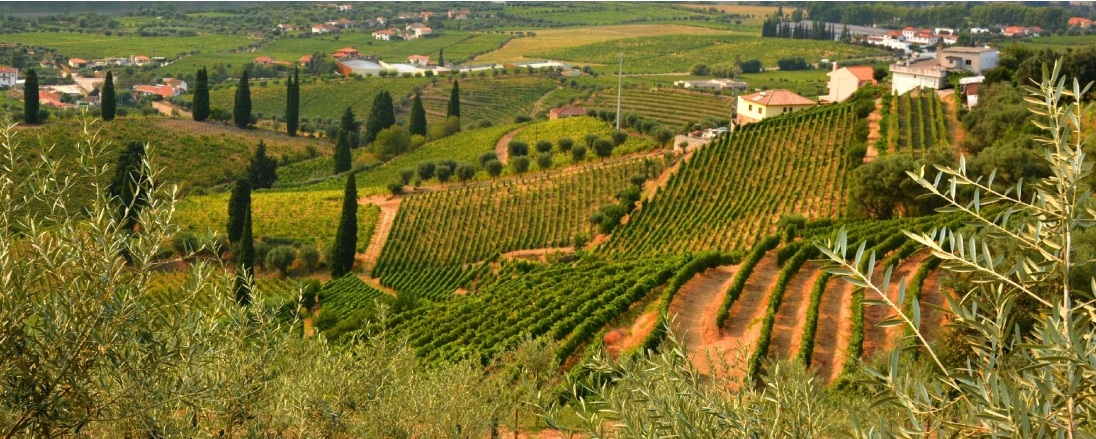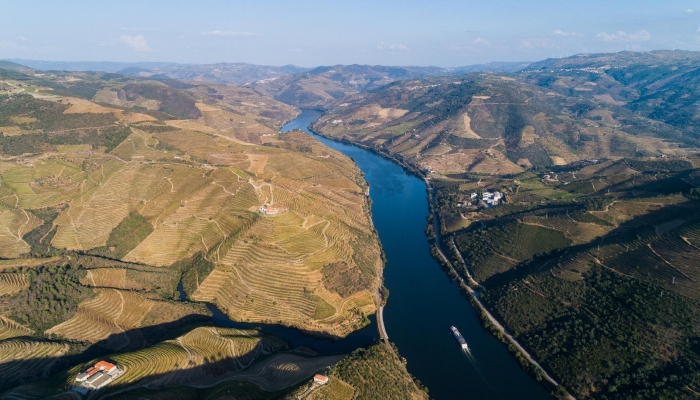Peso da Régua: 8 Spectacular Places You Can't Miss!
The Region
2024-04-03

We chose the best that Peso da Régua has to offer and took note of the top eight absolutely unmissable destinations.
A completely satisfying vacation is waiting for you in a town whose name has the following origin:
- Peso was the original settlement, developing on the hillside and corresponding to the upper part of the current city;
- Régua corresponding to the lower part of the current city and extending along the banks of the Douro, which grew with the arrival of the train. The existence of this important railroad station (and the commercial warehouse of Port Wine) gave notoriety to the name of Régua.
Nowadays, many tourists - Portuguese and foreigners - venture to this emblematic city, considered the heart of the Douro. And these are the places you really can't miss!
Galafura and Covelinhas – São Leonardo Viewpoint
The first proposal of our itinerary includes a visit to the union of the parishes of Galafura and Covelinhas, where one of the most beautiful viewpoints of the entire Douro region is located, the S. Leonardo viewpoint, where Miguel Torga used to "dive" into the river.
Nowadays you can also take that "nature bath" in a place where the Douro is the constant element of the huge landscape you can get from this point.
If you ask any local inhabitant for information about the viewpoint, you will hear several legends and stories, which only increase the charm of this stop. A Roman fortress once existed here and on this trip you will come across Roman wells, some of them very deep.

According to one of the legends, a Moorish king enchanted his daughter with the following formula:
“Open fraga, here stays my daughter until the day they sow flax on this rock, make a towel with it, and eat a dinner on it”
When a shepherd heard this, he put earth on the rock, sowed the flax and watered it every day. From the flax he made a towel, and there he ate his supper. But, because he didn't know how to use the formula well, the little girl was forever enchanted there.
Moura Morta – Ruins and Monuments
Here is a place of great importance in the Douro region. Once again the legends are behind this parish, whose name has its origin in a Moorish princess, murdered in this place by the Templars, for refusing to deny her faith and embrace the Christian faith.
It is possible that the Templars were in Moura Morta until 1319, when D. Diniz, by order of Pope Clement V, dissolved the Order of the Temple and transformed it into the Order of Christ.
Located in the slopes of the Marão mountain range, Moura Morta keeps ruins of the House of the Order of Malta, as well as the Chamber and the Jail. Further away from the authority and power that these places recall, you can also visit the Mother Church, the Casa da Comenda (18th century), the Medieval Bridge of Cavalar and the centenary Cross.
Godim – Wines from Casa Ferreirinha
Godim is one of the most urban parishes of the region, with some abundance of commerce and services, but with the vineyard and wine to be the brand image of the town.
Different periods of the county's history are represented here, although the development of the communication routes, indispensable to a greater economic dynamics of the city, has marked another, faster, step to Godim.
In this parish was born and died D. Antonia Adelaide Ferreira (known as Ferreirinha). D. Antonia, who was born in the county of Godim in 1810, lived her childhood in the House of Travassos, and died in 1896 in the House of Nogueiras. Two years after her death, the “Companhia Agrícola dos Vinhos do Porto”, better known as "Casa Ferreirinha", was created. Godim is a good place to do a tasting of wines from this house.
Régua Railway Station
The visit to Régua is even more enriched with a stop at the Railroad Station, where the first train arrived on July 14, 1879.
Before the construction of the railroads, the Douro region didn't have good communications... the transport by Rabelo Boat through the Douro River was very difficult and time consuming (the trip from Porto to Régua used to take 6 to 8 days).
Still in the 19th Century, the German entrepreneur Maximiliano Schreck was authorized to build an American-type railway between Vila Real, Régua, Lamego and Viseu. In September 1905, a plan for the expansion of this station had already been drawn up and presented to the Higher Council of Public Works, in order to accommodate both the Corgo Line, then under construction, and the planned Régua to Vila Franca das Naves Line. The first section of the Corgo Line, between Régua and Vila Real, was opened for operation on May 12, 1906.
The fact that it is the junction point of two railway lines, and that several roads cross here, turned the Régua into an important communications center between the regions of Beira and Trás-os-Montes. The station also became an important transportation center for Port Wine. In April 1935, the station was again expanded.
The stretch of the Corgo Line between Régua and Vila Real was closed by the National Railway Network on March 25, 2009.There are some steam traction machines that are abandoned in this station and attract many curious people to take pictures of them.
Poiares – Religious References
Poiares is a village in the Peso da Régua municipality so old that the date of its foundation is not known in detail. It is known that it was the Order of the Temple that established it and that the religious references are many.
In Poiares, it is worth your time to visit the “Casa da Comenda”, the “Igreja Matriz”, the “Capela de Santa Bárbara” and the “Capela de Nossa Senhora da Graça”, next to the cross. With the creation of the diocese of Vila Real in 1924, the local Seminary became a Missionary Institute and in it students from the preparatory course received education and instruction, who aspired to the missionary apostolate in the overseas lands of the Portuguese Empire.
Vilarinho de Freires – Tanha River and Vineyards
Vilarinho de Freires is one of the oldest parishes in the municipality of Peso da Régua. Before Portugal was constituted as an independent nation, Vilarinho de Freires had already been founded, starting, however, by integrating the county of Santa Marta de Penaguião.
Vilarinho de Freires is crossed by the river Tanha, which not far away meets the Corgo. In a hillside of fertile land in vineyards and olive trees, it is a quiet place, with very rural characteristics. The Tanha is another reason to visit Vilarinho de Freires, where it flows.
The river runs alongside about 60 water mills, almost all abandoned, and has dozens of levadas, with some species of fauna and flora in danger of extinction. With some time spent by the river, you will be able to spot them.
The visit to this parish also stands out for its landscape dominated by vineyards. Even so, there is the Mother Church built in honor of the patron saint, “Nossa Senhora das Neves”, the Chapel “Quinta da Ponte”, the “Casa Grande” and the “Casa da Carranca” to enjoy.
Douro Museum
The Douro Museum was opened in 2008 in Régua and in it you can see the result of its initial goal to gather, conserve, document, identify, investigate, preserve and display all the historical and anthropological, spiritual and material sources of cultural and natural heritage of the Douro region.
The museum is housed in “Casa da Companhia” (former premises of “Real Companhia Velha”) and in it you can also enjoy a wine bar overlooking the Douro, a restaurant and a store. It is open daily from 10 am to 6 pm, so you can schedule your visit for when it suits you best.
Porto - Régua Cruise
Why not take a cruise to Régua? Starting in the charming city of Porto, we sail along one of the most beautiful and elegant stretches of the Douro River, including a descent from the Carrapatelo Dam (35m drop) and the Crestuma-Lever Dam (14m drop). It should be noted that the Régua Quay has public access and is also a beautiful place to wait for us.

